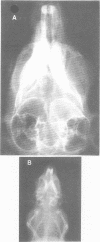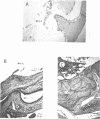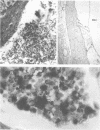Abstract
To ascertain the usefulness of Mongolian gerbils as an inbred model for otitis media, 52 Mongolian gerbils (Meriones unguiculatus, strain MONT/Tum) were compared with 26 chinchillas (Chinchilla laniger) for susceptibility to Streptococcus pneumoniae type 3. Haemophilus influenzae type b, and a polymicrobic culture including anaerobes (Streptococcus intermedius, Propionibacterium acnes, Staphylococcus epidermidis, and Corynebacterium sp.). Organisms were inoculated percutaneously into the superior chamber of the middle ear bulla. The gerbils and chinchillas shared similar susceptibilities and responses to the inoculated organisms as determined by X-ray, otoscopic, histopathological, and microbiological determinations at 5 to 7 days. Koch's postulate studies proved the role of S. pneumoniae and H. influenzae in the pathology found in both animal models. The animals were also susceptible to the polymicrobic culture, although the relative virulence of the individual members of this mixture was low, suggesting that these species potentiated as a polymicrobic mixture. The Corynebacterium sp. appeared to elicit the greatest histopathological response in chronic (8-week) studies in gerbils. The gerbils were found to be useful as an alternative animal model for the study of otitis media of bacterial etiology.
Full text
PDF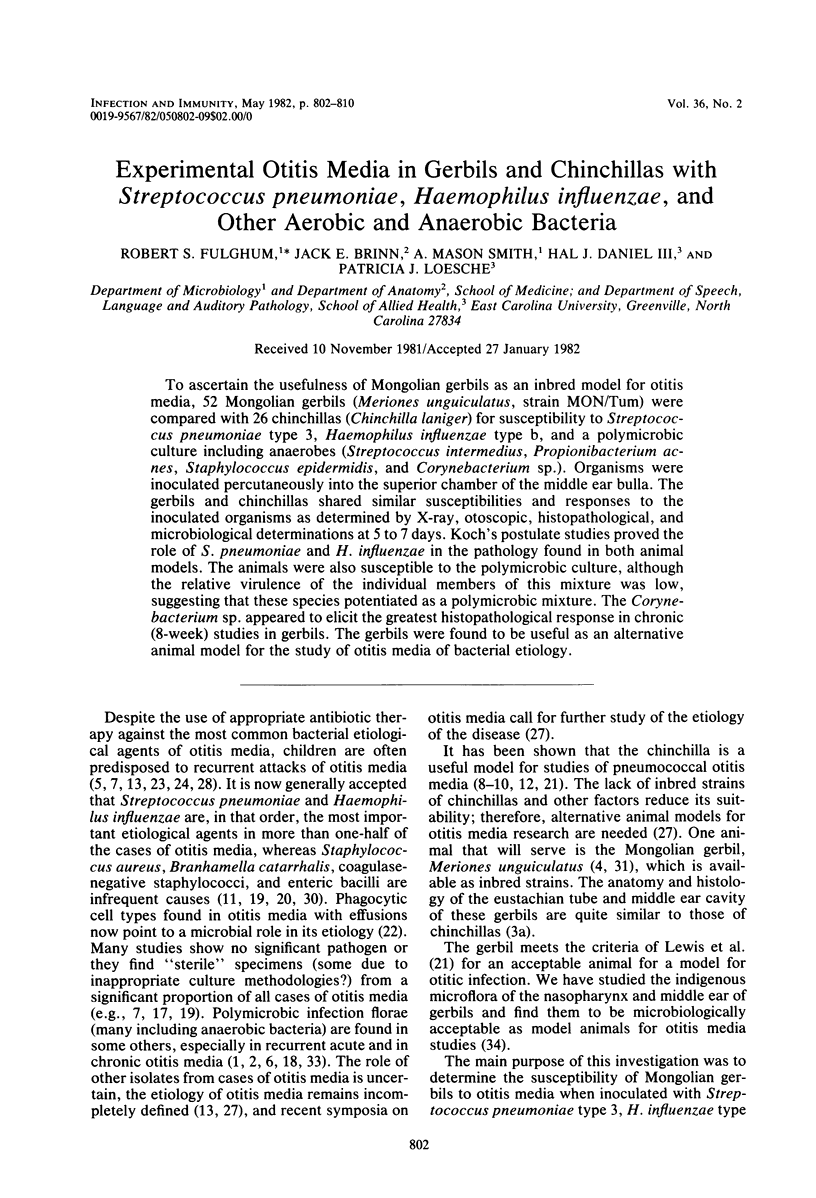
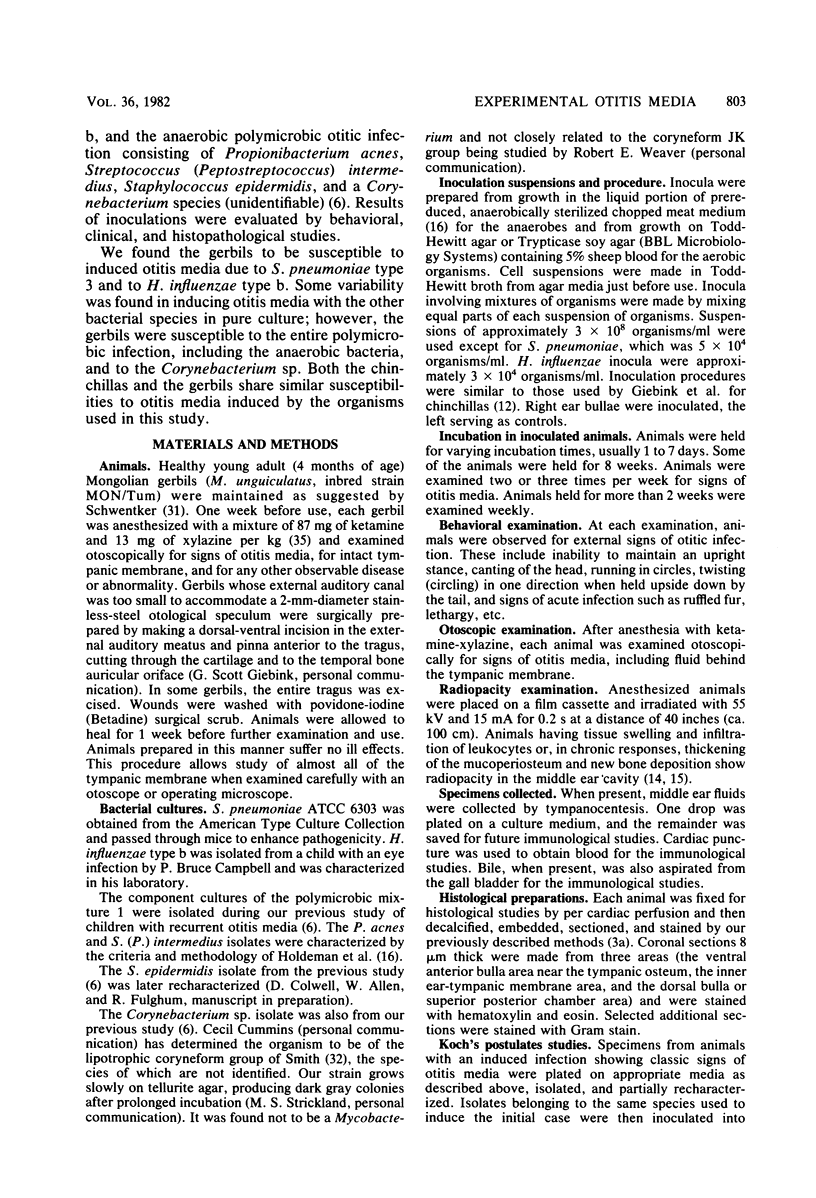
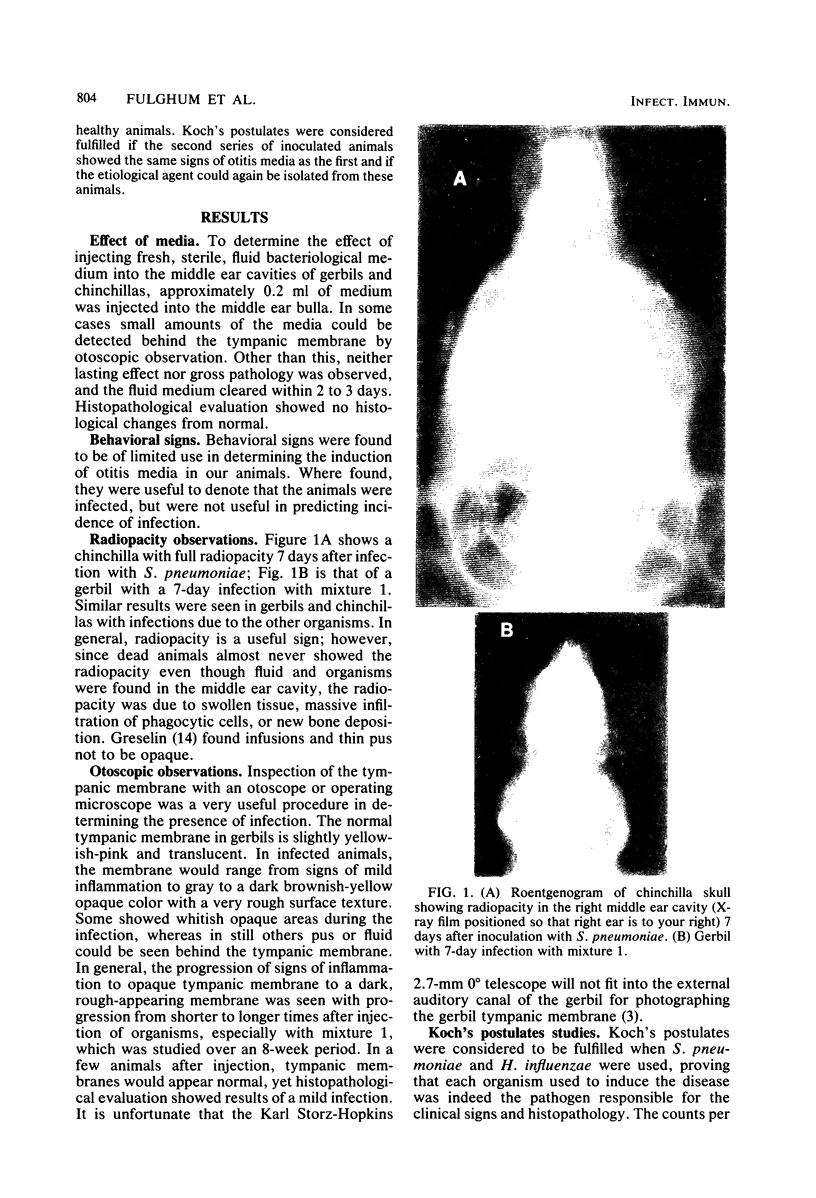
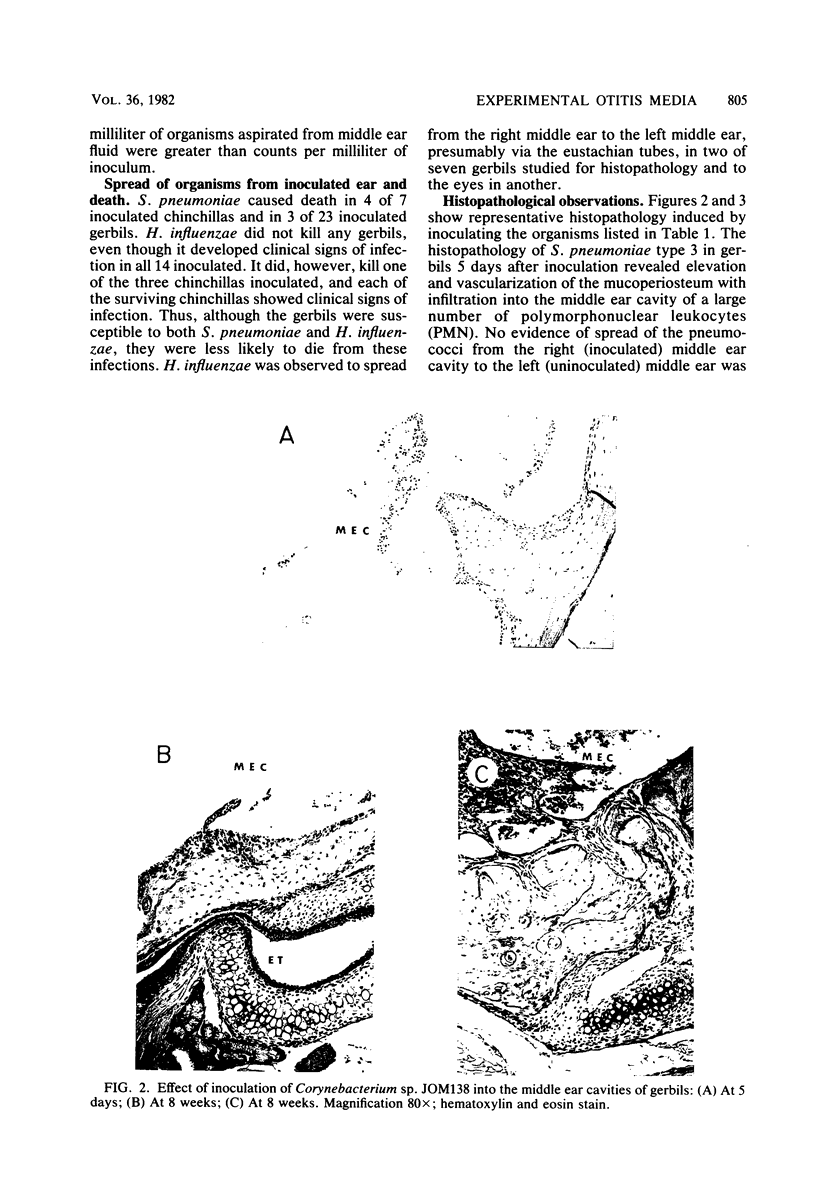
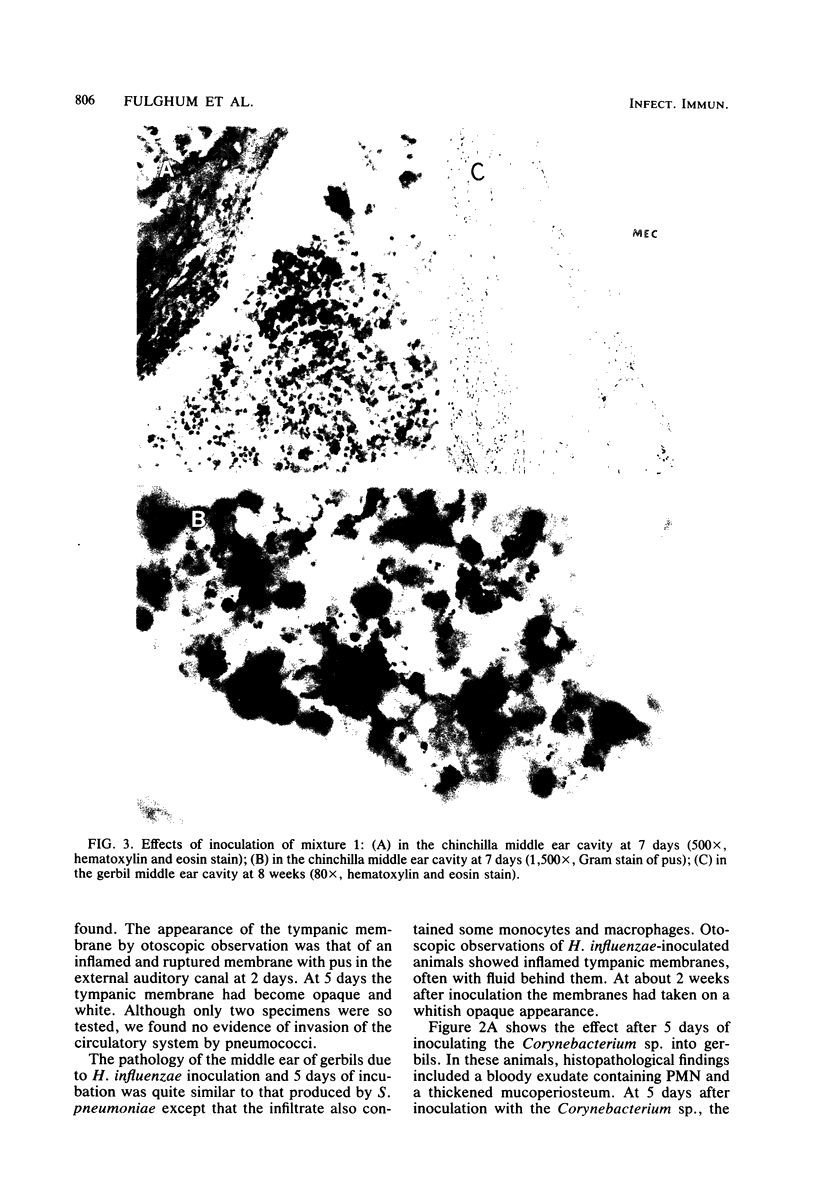
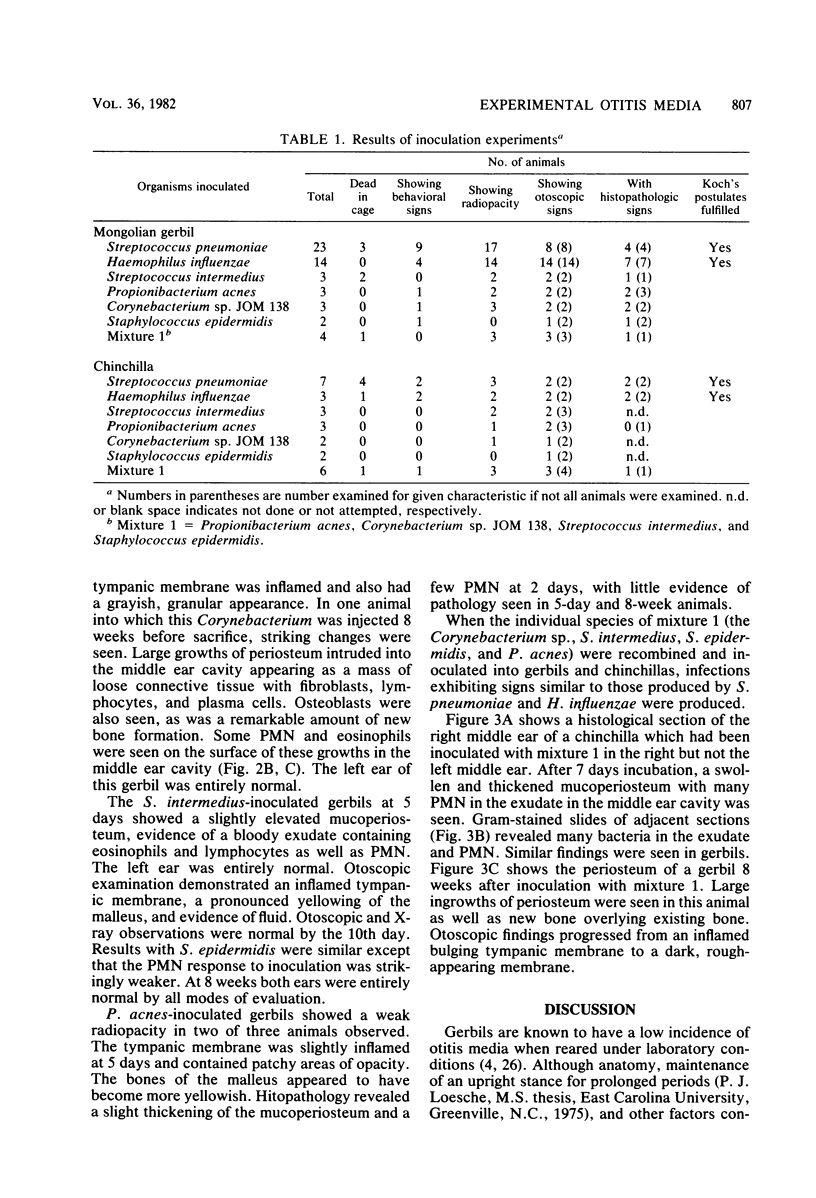
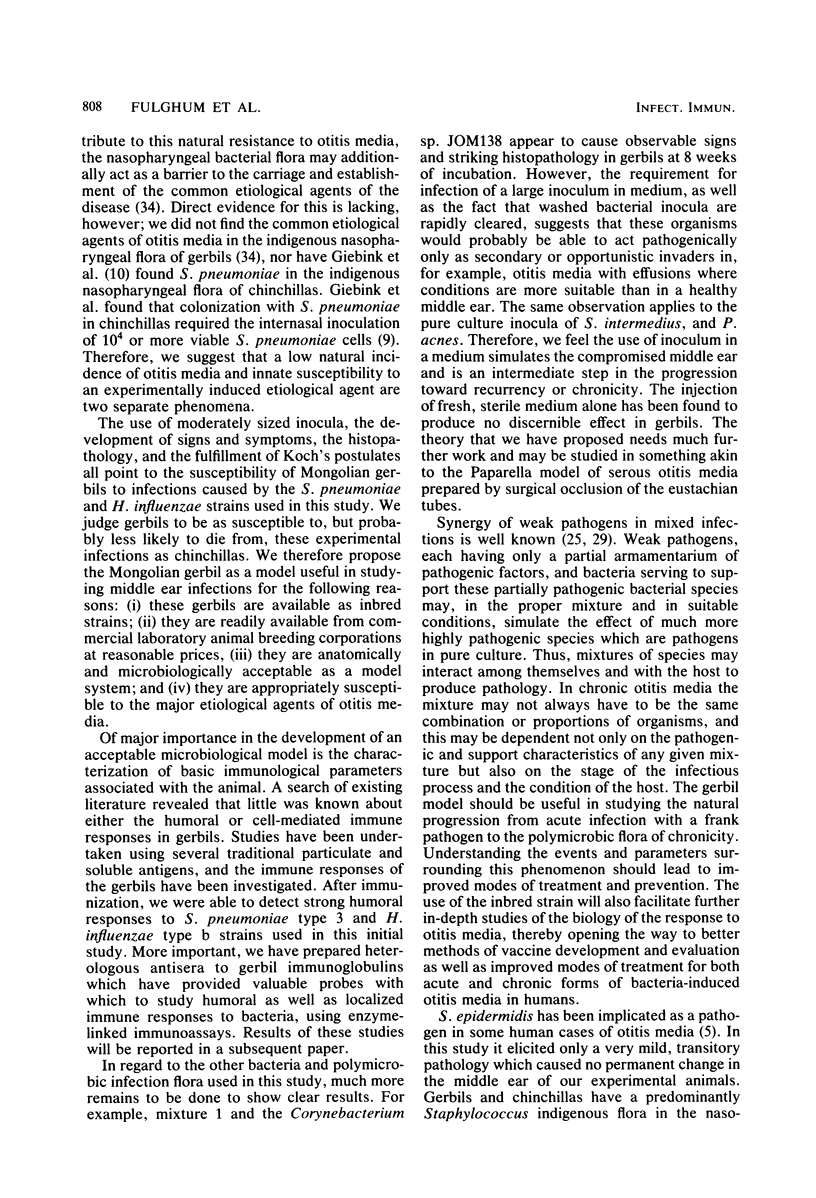
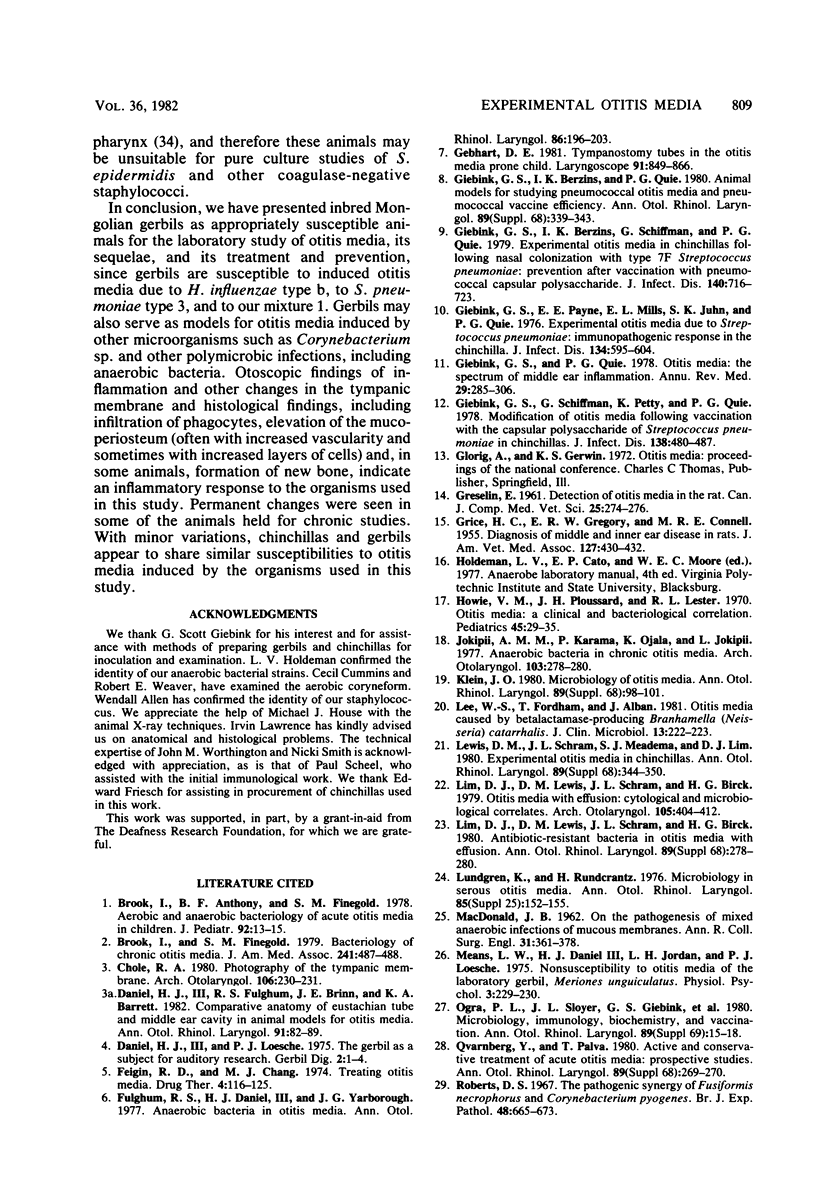
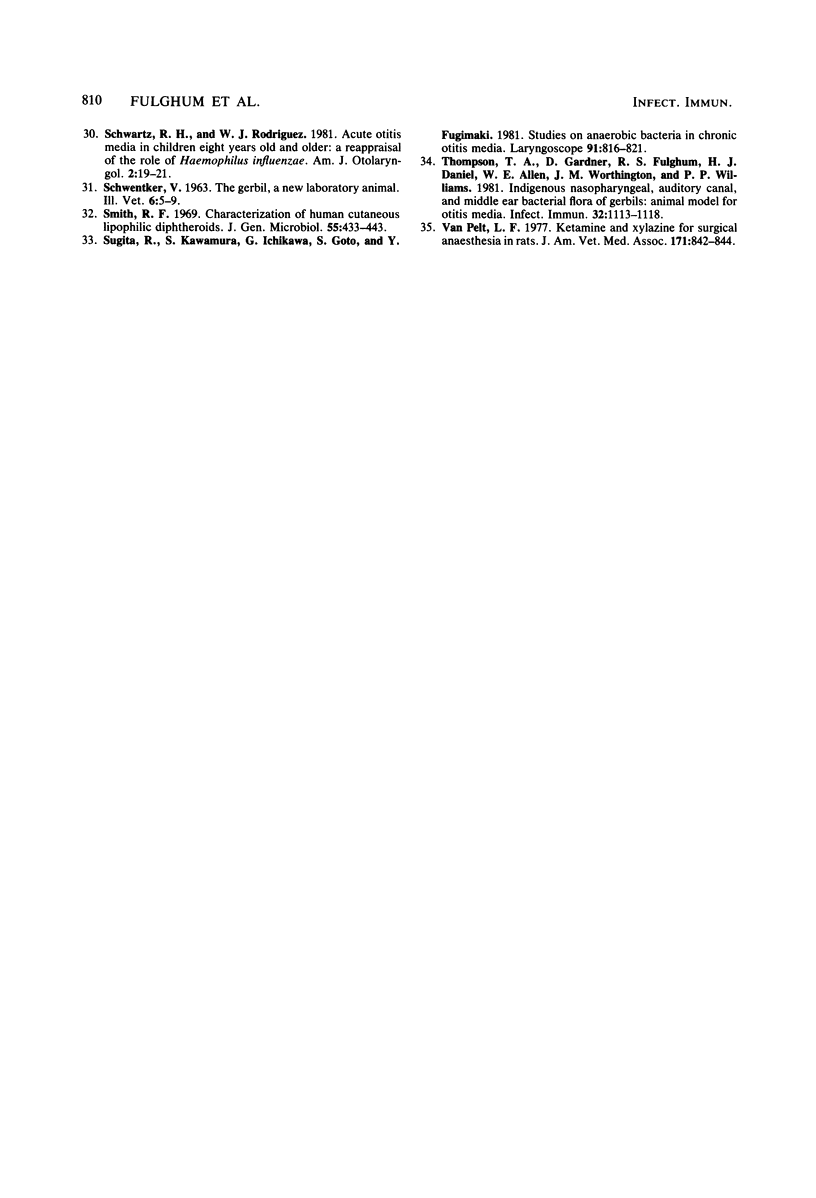
Images in this article
Selected References
These references are in PubMed. This may not be the complete list of references from this article.
- Brook I., Anthony B. F., Finegold S. M. Aerobic and anaerobic bacteriology of acute otitis media in children. J Pediatr. 1978 Jan;92(1):13–16. doi: 10.1016/s0022-3476(78)80060-2. [DOI] [PubMed] [Google Scholar]
- Brook I., Finegold S. M. Bacteriology of chronic otitis media. JAMA. 1979 Feb 2;241(5):487–488. [PubMed] [Google Scholar]
- Chole R. A. Photography of the tympanic membrane. A new method. Arch Otolaryngol. 1980 Apr;106(4):230–231. doi: 10.1001/archotol.1980.00790280038007. [DOI] [PubMed] [Google Scholar]
- Daniel H. J., 3rd, Fulghum R. S., Brinn J. E., Barrett K. A. Comparative anatomy of eustachian tube and middle ear cavity in animal models for otitis media. Ann Otol Rhinol Laryngol. 1982 Jan-Feb;91(1 Pt 1):82–89. doi: 10.1177/000348948209100118. [DOI] [PubMed] [Google Scholar]
- Fulghum R. S., Daniel H. J., 3rd, Yarborough J. G. Anaerobic bacteria in otitis media. Ann Otol Rhinol Laryngol. 1977 Mar-Apr;86(2 Pt 1):196–203. doi: 10.1177/000348947708600210. [DOI] [PubMed] [Google Scholar]
- GRICE H. C., GREGORY E. R., CONNELL M. R. Diagnosis of middle and inner ear disease in rats. J Am Vet Med Assoc. 1955 Nov;127(944):430–432. [PubMed] [Google Scholar]
- Gebhart D. E. Tympanostomy tubes in the otitis media prone child. Laryngoscope. 1981 Jun;91(6):849–866. doi: 10.1288/00005537-198106000-00001. [DOI] [PubMed] [Google Scholar]
- Giebink G. S., Berzins I. K., Quie P. G. Animal models for studying pneumococcal otitis media and pneumococcal vaccine efficacy. Ann Otol Rhinol Laryngol Suppl. 1980 May-Jun;89(3 Pt 2):339–343. doi: 10.1177/00034894800890s380. [DOI] [PubMed] [Google Scholar]
- Giebink G. S., Berzins I. K., Schiffman G., Quie P. G. Experimental otitis media in chinchillas following nasal colonization with type 7F Streptococcus pneumoniae: prevention after vaccination with pneumococcal capsular polysaccharide. J Infect Dis. 1979 Nov;140(5):716–723. doi: 10.1093/infdis/140.5.716. [DOI] [PubMed] [Google Scholar]
- Giebink G. S., Payne E. E., Mills E. L., Juhn S. K., Quie P. G. Experimental otitis media due to Streptococcus pneumoniae: immunopathogenic response in the chinchilla. J Infect Dis. 1976 Dec;134(6):595–604. doi: 10.1093/infdis/134.6.595. [DOI] [PubMed] [Google Scholar]
- Giebink G. S., Quie P. G. Otitis media: the spectrum of middle ear inflammation. Annu Rev Med. 1978;29:285–306. doi: 10.1146/annurev.me.29.020178.001441. [DOI] [PubMed] [Google Scholar]
- Giebink G. S., Schiffman G., Petty K., Quie P. G. Modification of otitis media following vaccination with the capsular polysaccharide of Streptococcus pneumoniae in chinchillas. J Infect Dis. 1978 Oct;138(4):480–487. doi: 10.1093/infdis/138.4.480. [DOI] [PubMed] [Google Scholar]
- Greselin E. Detection of Otitis Media in the Rat. Can J Comp Med Vet Sci. 1961 Nov;25(11):274–276. [PMC free article] [PubMed] [Google Scholar]
- Howie V. M., Ploussard J. H., Lester R. L., Jr Otitis media: a clinical and bacteriological correlation. Pediatrics. 1970 Jan;45(1):29–35. [PubMed] [Google Scholar]
- Jokipii A. M., Karma P., Ojala K., Jokipii L. Anaerobic bacteria in chronic otitis media. Arch Otolaryngol. 1977 May;103(5):278–280. doi: 10.1001/archotol.1977.00780220072007. [DOI] [PubMed] [Google Scholar]
- Klein J. O. Microbiology of otitis media. Ann Otol Rhinol Laryngol Suppl. 1980 May-Jun;89(3 Pt 2):98–101. doi: 10.1177/00034894800890s326. [DOI] [PubMed] [Google Scholar]
- Lee W. S., Fordham T., Alban J. Otitis media caused by beta-lactamase-producing Branhamella (Neisseria) catarrhalis. J Clin Microbiol. 1981 Jan;13(1):222–223. doi: 10.1128/jcm.13.1.222-223.1981. [DOI] [PMC free article] [PubMed] [Google Scholar]
- Lewis D. M., Schram J. L., Meadema S. J., Lim D. J. Experimental otitis media in chinchillas. Ann Otol Rhinol Laryngol Suppl. 1980 May-Jun;89(3 Pt 2):344–350. doi: 10.1177/00034894800890s381. [DOI] [PubMed] [Google Scholar]
- Lim D. J., Lewis D. M., Schram J. L., Birck H. G. Antibiotic-resistant bacteria in otitis media with effusion. Ann Otol Rhinol Laryngol Suppl. 1980 May-Jun;89(3 Pt 2):278–280. doi: 10.1177/00034894800890s365. [DOI] [PubMed] [Google Scholar]
- Lim D. J., Lewis D. M., Schram J. L., Birck H. G. Otitis media with effusion. Cytological and microbiological correlates. Arch Otolaryngol. 1979 Jul;105(7):404–412. doi: 10.1001/archotol.1979.00790190030006. [DOI] [PubMed] [Google Scholar]
- Lundgren K., Rundcrantz H. Microbiology in serous otitis media. Ann Otol Rhinol Laryngol. 1976 Mar-Apr;85(2 Suppl 25 Pt 2):152–155. doi: 10.1177/00034894760850S228. [DOI] [PubMed] [Google Scholar]
- Qvarnberg Y., Palva T. Active and conservative treatment of acute otitis media. Prospective studies. Ann Otol Rhinol Laryngol Suppl. 1980 May-Jun;89(3 Pt 2):269–270. doi: 10.1177/00034894800890s362. [DOI] [PubMed] [Google Scholar]
- Roberts D. S. The pathogenic synergy of Fusiformis necrophorus and Corynebacterium pyogenes. I. Influence of the leucocidal exotoxin of F. necrophorus. Br J Exp Pathol. 1967 Dec;48(6):665–673. [PMC free article] [PubMed] [Google Scholar]
- Schwartz R. H., Rodriguez W. J. Acute otitis media in children eight years old and older: a reappraisal of the role of Hemophilus influenzae. Am J Otolaryngol. 1981 Feb;2(1):19–21. doi: 10.1016/s0196-0709(81)80004-x. [DOI] [PubMed] [Google Scholar]
- Smith R. F. Characterization of human cutaneous lipophilic diphtheroids. J Gen Microbiol. 1969 Mar;55(3):433–443. doi: 10.1099/00221287-55-3-433. [DOI] [PubMed] [Google Scholar]
- Thompson T. A., Gardner D., Fulghum R. S., Daniel H. J., Allen W. E., Worthington J. M., Williams P. P. Indigenous nasopharyngeal, auditory canal, and middle ear bacterial flora of gerbils: animal model for otitis media. Infect Immun. 1981 Jun;32(3):1113–1118. doi: 10.1128/iai.32.3.1113-1118.1981. [DOI] [PMC free article] [PubMed] [Google Scholar]
- Van Pelt L. F. Ketamine and xylazine for surgical anesthesia in rats. J Am Vet Med Assoc. 1977 Nov 1;171(9):842–844. [PubMed] [Google Scholar]



